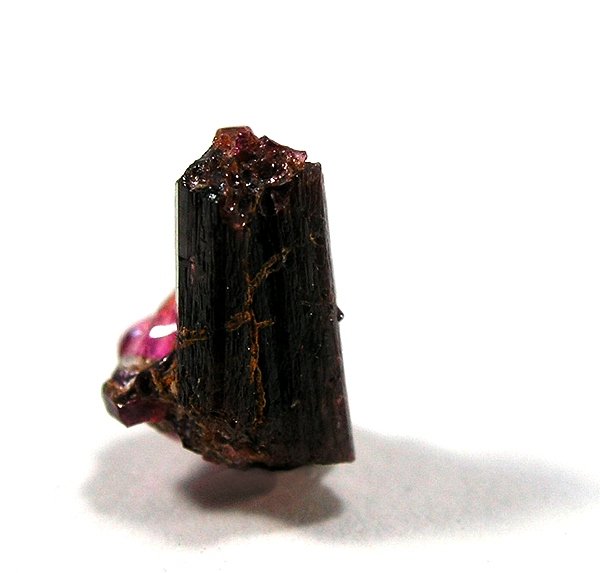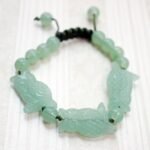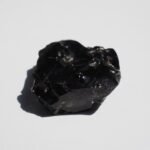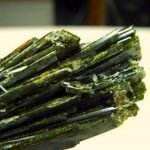When it comes to rare and captivating gemstones, Painite stands in a league of its own. Discovered in the 1950s in Myanmar, Painite gemstone is considered one of the rarest minerals on Earth. With its striking reddish-brown to deep orange hues, Painite stone has fascinated gem collectors, mineral enthusiasts, and jewelry lovers alike. Let’s dive into the enchanting world of Painite from its unique properties to its various uses in jewelry, its value, and how you can find authentic Painite for sale.
What is Painite?
Painite is a borate mineral that contains rare elements like zirconium and boron, giving it a unique composition and stunning appearance. Known for its distinctive color range ranging from brownish red to dark amber, and even rare instances of blue Painite or green Painite it is a true marvel of nature. Its remarkable hardness, rated at 8 on the Mohs scale, makes it suitable for various jewelry applications, including Painite rings, Painite necklaces, and Painite bracelets.

The History and Discovery of Painite
Painite Gemstones was first unearthed in Myanmar (Burma) in the 1950s. When Arthur C.D. Pain initially discovered the gemstone, he mistook it for a ruby due to its reddish color. However, further analysis revealed that this was an entirely new mineral, previously unknown to science. For over 50 years, only two confirmed Painite crystals existed, cementing its status as the rarest gemstone in the world. It wasn’t until the early 2000s that additional deposits were found in Myanmar. Despite these discoveries, Painite remains incredibly rare, with only a small number of gem-quality specimens available.
Painite Gemstone Properties and Colors
The Painite gemstone is most commonly known for its deep reddish-brown hue, but variations such as black Painite, blue Painite, and even green Painite have been documented, adding to its rarity and allure. Painite crystal structures exhibit a faceted Painite brilliance when cut and polished, and the stone can show strong pleochroism, meaning it displays different colors from different angles.
Gemologists and collectors are also fascinated by Painite cleavage—which is typically indistinct—and the stone’s painite color variations, making each gem unique.
Where is Painite Found?
Painite is primarily found in Myanmar, particularly in the Mogok Valley an area famous for producing some of the world’s finest rubies, sapphires, and spinels. The extreme rarity of Painite is due to the precise geological conditions needed for its formation. Only a few mines in the region have yielded Painite crystals, further adding to its exclusivity. While more specimens have been discovered in recent years, Painite remains one of the rarest gemstones on Earth, with limited sources and challenging extraction processes contributing to its high value.
Metaphysical and Healing Properties of Painite
Beyond its rarity, Painite is believed to possess powerful metaphysical properties. Crystal healers and energy workers associate it with transformation, clarity, and spiritual growth. Painite is thought to enhance spiritual awareness, deepening meditation and inner reflection. It is said to promote a connection to higher consciousness and unlock hidden potential. This rare gemstone is associated with change, helping individuals navigate life transitions and embrace new beginnings with resilience. Painite is believed to improve concentration and decision-making, clearing mental distractions and encouraging creative thinking. While not commonly used in crystal healing due to its rarity, Painite is valued for its profound energy and ability to inspire deep personal insight.
Painite in Jewelry: Rings, Necklaces, and More
Because of its hardness and rarity, Painite has become a sought-after choice for unique jewelry pieces. Painite engagement rings are perfect for those who desire an extraordinary alternative to traditional stones. Whether you’re searching for a Painite ring for sale or a Painite wedding ring, owning natural Painite is like holding a piece of Earth’s most exclusive treasure. The painite ring price can vary significantly, with smaller stones being more affordable, while larger, high-quality gem Painite pieces can command premium prices.
For those who prefer versatile options, Painite necklaces, Painite bracelets, and even Painite birthstone jewelry are gaining popularity among gemstone collectors.
How to Identify Painite Gemstones
Due to its resemblance to garnet and ruby, identifying Painite requires careful gemological analysis. Painite ranks 8 on the Mohs hardness scale, making it slightly softer than sapphire but harder than garnet. This property helps distinguish it from other gemstones. Painite has a hexagonal crystal structure, a unique trait that helps gemologists identify it under magnification. While Painite’s reddish-brown color can resemble garnet or spinel, it often exhibits subtle orange or pink undertones that set it apart. Advanced gemological testing, such as spectroscopic analysis, confirms Painite’s unique chemical composition, ensuring it is not mistaken for other minerals.
Physical Characteristics Painite Gemstones
Painite is a unique and rare gemstone with distinctive physical characteristics that set it apart from other minerals.
Color
Painite typically ranges in color from brownish-red to pink, though it can sometimes display shades of orange and even a hint of purple. The color can vary depending on the specific trace elements within the gemstone, giving it a rich and complex appearance. The reddish-brown hues are most common, contributing to its deep, alluring allure.
Crystal Form
Painite crystals typically form in a hexagonal shape, which is a key identifying feature of the gemstone. This crystalline structure contributes to its unique visual appeal and helps distinguish it from other gemstones with different forms.
Hardness
While not as hard as sapphires or diamonds, Painite is still a relatively durable gemstone, with a Mohs hardness of 8. This makes it suitable for use in jewelry, though care should still be taken to avoid scratching or damaging the gemstone. Its hardness places it between ruby and garnet in terms of durability.
Chemical Composition
The uniqueness of Painite is attributed to its complex chemical composition, which includes elements like calcium, zirconium, boron, aluminum, and oxygen. This distinctive makeup contributes to the gemstone’s rarity, as the specific conditions required for its formation are uncommon in nature. These elements work together to produce Painite’s unique crystal structure and deep coloration.
Transparency
Painite’s transparency can vary, with some specimens being transparent to translucent, and others appearing more opaque. The highest quality Painite gemstones are semi-transparent and exhibit a vivid, clean color, which enhances their visual appeal.
The physical characteristics of Painite, combined with its extreme rarity, make it one of the most sought-after gemstones in the world, prized by collectors and gem enthusiasts alike.
Painite Crystal Meanings and Healing Properties
While Painite is relatively new to the metaphysical world, it is believed to enhance spiritual awareness, promote transformation, and encourage a sense of calm. Some also associate it with heart chakra healing, aligning with its painite color spectrum. Whether you’re drawn to painite birthstone meanings or simply admire its beauty, Painite gemstone can make a meaningful addition to your crystal collection.
Painite Origins: From Myanmar to the World
Painite, one of the rarest gemstones on Earth, was first discovered in Myanmar in the 1950s by British gemologist Arthur C.D. Pain, after whom it was named. For decades, only a few specimens were known, solidifying its reputation as the rarest gemstone in the world. The extreme rarity of Painite is due to the unique geological conditions required for its formation, with Myanmar’s Mogok Valley remaining the primary source. Though small deposits have been found in Madagascar and Sri Lanka, they are insignificant compared to Myanmar’s rich reserves. The gemstone’s scarcity, coupled with its challenging extraction process, continues to make Painite highly coveted in the world of gem collecting.
How to Identify painite gem
Visual Identification
Because Painite is so rare and looks a lot like garnet or Natural ruby, it can be difficult to identify. Important features are its distinct reddish-brown hue, high refractive index, and hexagonal crystal structure.
Scientific Identification
In order to verify the authenticity of Painite, gemologists frequently employ sophisticated instruments like spectrometers and X-ray diffraction. It is distinguished from other stones, even those that seem similar to the unaided eye, by its unique chemical makeup and crystal structure.
Painite Cut and Cleavage
Painite cut can significantly influence its brilliance and value. A well-executed cut Painite enhances the stone’s deep color and optical properties. While Painite cleavage is generally indistinct, it is essential to handle and store these rare stones with care to preserve their integrity.
The Value and Cost of Painite
Given its rarity, Painite price can be high, often making it one of the most expensive gemstones per carat. The cost of Painite depends on several factors, including size, clarity, and color. Black Painite price or blue Painite stones may differ significantly due to their unique colorations. Larger, faceted Painite specimens that exhibit strong color saturation and minimal inclusions are especially valuable.
FAQs About Painite Gemstone
Painite is a rare borate mineral containing zirconium, known for its reddish-brown to orange hues and exceptional hardness.
Yes, Painite gemstone is one of the rarest minerals on Earth, making it highly valuable.
The cost of Painite varies widely, often reaching thousands of dollars per carat for high-quality specimens.
Yes, though rare, Painite engagement rings are available through specialized jewelers.
Painite primarily occurs in reddish-brown, but rarer colors include black Painite, blue Painite, and green Painite.
With a hardness of 8, Painite is durable, but due to its rarity, it’s best suited for occasional wear or collection pieces.
Yes, you can find images of Painite through gem dealers and reputable mineral websites.
While not officially assigned, Painite birthstone enthusiasts often associate it with spiritual renewal.
No, Painite and diamonds are separate minerals; however, some might refer to high-quality, faceted Painite as “Painite diamond” informally.
Always purchase from reputable sellers and request gemological certificates to confirm natural Painite authenticity.
Conclusion: The Extraordinary Rarity of Painite
In the world of gemstones, Painite holds a rare and prestigious position. From its striking hues black Painite, blue Painite, or green Painite to its captivating use in Painite rings, Painite necklaces, and Painite bracelets, this gem is a true collector’s dream. Whether you’re an investor looking for a unique gem Painite, a jewelry enthusiast exploring Painite engagement rings, or someone seeking the metaphysical benefits of Painite crystal, this stone is a treasure worth cherishing.







